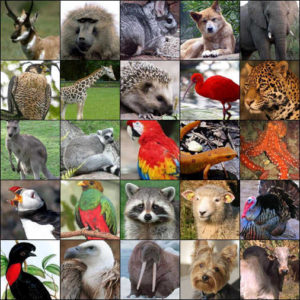Animals True or False Quiz with Answers

True or False General Knowledge Quiz about Animals
Insects & Spiders: True or False
Insects and spiders are fascinating, from delicate butterflies to dancing honeybees and fuzzy tarantulas. But how much do you really know about their behavior and origins?
1. Some ants are vampires.
True or False?
True
The aptly named Dracula ant, which resembles a wasp, is an ant species that feeds on the blood, or hemolymph, of its own young. The young survive to feed on their own young—a very strange arrangement!
2. Spiders are classified as dipterans.
True or False?
False
Scientists classify spiders as arachnids, a kind of creature that has four pairs of legs. Dipterans are insects with two sets of wings.
3. Bees communicate by dancing.
True or False?
True
Bees signal to other bees through a language of dance. A “round dance,” for example, signals that food is nearby, while other dances are used to communicate information about other environmental conditions.
4. All butterflies can fly.
True or False?
False
On the Kerguelen Islands near Antarctica live butterflies that cannot fly. The wind is so powerful that flying is dangerous, and so they have lost that ability over generations.
5. The honeybee evolved in Africa.
True or False?
True
The honeybee evolved 100 million years ago in Africa, then migrated to other areas in at least two ancient waves that can be charted in its DNA.
6. Most ants are workers.
True or False?
True
Worker ants make up the vast majority of the ant population. They build and maintain the nest, care for eggs and larvae, gather food, defend the nest, and provide food for the queens.
7. Spiders do not have antennae.
True or False?
True
Unlike insects, spiders have no antennae. They do have two appendages near their mouths that are often confused with insect antennae. These structures, called pedipalps, can be used to manipulate prey while feeding or for other specialized functions.
8. The name “ladybug” has a religious origin.
True or False?
True
The name “ladybug” originated in the Middle Ages, when the beetle was dedicated to the Virgin Mary and called “beetle of Our Lady.”
9. There are more butterfly species than moth species in the United States.
True or False?
False
In North America north of Mexico there are 8,000 kinds of moths, but only 700 kinds of butterflies.
10. Ants have little role in the environment.
True or False?
False
Ants are important members of many niches. In dry regions they help bring air into the soil by tunneling, while in forests they eat leaf-devouring insects, keeping trees healthy.
Mammalian Matters: True or False Animals GK
Will big horns sink a water buffalo? Is the vampire bat’s thirst for blood bigger than the bat itself? And do orangutans live in Africa? The facts about mammals come out in this quiz.
11. Vampire bats can drink large amounts of blood.
True or False?
True
The common vampire bat has a length of 7–9 centimeters, but its weight can vary dramatically. A 57-gram vampire bat can double its weight in one feeding.
12. The ocelot is a kind of cat.
True or False?
True
The ocelot is a leopardlike cat, with striped and spotted fur, found in tropical America and the extreme southwestern United States.
13. The smallest canid is the fennec.
True or False?
True
The fennec is a kind of fox. It is the smallest of all foxes, and the smallest of all canids—that is, doglike creatures. It weighs only 1.5 kilograms.
14. Indian elephants are larger than African elephants.
True or False?
False
African elephants are slightly larger and heavier than Indian elephants. They can also be distinguished by the bumps in the trunk: two for an African and one for an Indian elephant.
15. Orangutans are native to Africa.
True or False?
False
Orangutans are the only great apes of Asia. They are found only in certain jungles on the islands of Borneo and Sumatra in Indonesia. In the past they also lived in mainland Southeast Asia.
16. Kinkajous are often found on the ground.
True or False?
False
Kinkajous, small mammals that live in Central and South America, rarely come to ground. They are active at night and sleep during the day in holes in trees.
17. Horses never lift all four feet off the ground at once.
True or False?
False
At a fast trot or run, horses can lift all four feet off the ground. A photographer named Eadweard Muybridge documented this in 1872.
18. Elephants have such large ears only for display.
True or False?
False
The elephant’s large ears radiate heat away from the body, an important adaptation in the hot tropical sun.
19. A water buffalo will sink because of its heavy horns.
True or False?
False
A water buffalo’s horns are very light. They help the animal float on water, in fact.
20. The Quarter Horse is called that because it is three-quarters mule.
True or False?
False
The Quarter Horse earns its name from its talent at winning quarter-mile (400 meter) races. These races were commonly held in colonial America, where the horse was bred.



